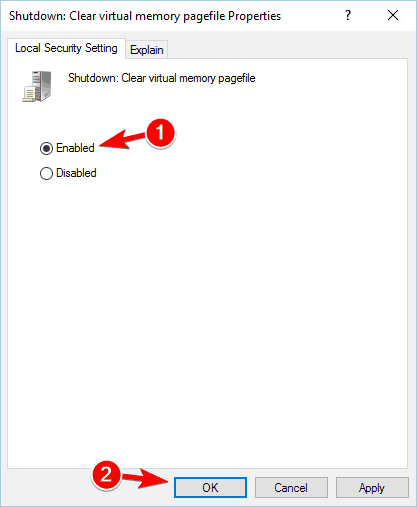Delete Pagefile.sys Windows 10
Posted : admin On 04.10.2019

How to delete it in Windows 10. Hyberfil.sys is a file used to store the current state of the windows. As you put your PC in the hibernate mode, it restores all the files later when you need it. However, this occupies a huge space in your hard disk.
- Typically, the paging file (pagefile.sys) takes up space on your primary hard drive and acts as a form of virtual memory for the operating system, freeing up the physical RAM for higher priority.
- Pagefile.sys is used by Windows 10 to store the data between the RAM and the computer temporarily, so we can say that this file works like a backup to the RAM memory. By default, Windows 10 creates this file on install.
This article aims to show you how to delete pagefile.sys in windows 10. Basically pagefile.sys is a Virtual Memory File stored on your local hard drive. Pagefile.sys or page file acts as a very important agent to speed up your computer as they are an add-on to the primary memory on which the system process runs.Page files work along with the primary memory. The stagnant data placed are transferred to the secondary memory in the form of page files.
These data are swapped back when needed by the primary memory again.You can delete these files when you need some extra memory because they won’t harm your data in any way until and unless you have saved your unsaved data but windows doesn’t recommend to delete these files.A very large chunk of pagefile.sys may slow down your system.Follow a few simple steps to remove pagefile.sys from your secondary memory Steps to remove pagefile.sys in windows 101. Open Cortana. In the search panel type Control Panel. Select the Control Panel application from the search results.2. Next, go to System and Security.3.
Go to System.4. Next, click on Advanced System Settings located on the left panel.3. Under the Advanced tab, select the Performance Settings option.4. The Performance Options open and select the Advanced tab. Under the Virtual memory options, click on Change.5. There is an option “Automatically manage paging file size for all drives.
How Delete Pagefile.sys Windows 10

This option is turned on. Uncheck the option.6. Select the No paging file radio button and click Set then press OK.8. Click OK and then Apply to save changes. To apply these settings finally reboot your system.
Image: FORGEM, Getty Images/iStockphotoSurvey after survey tells us that IT professionals and decision-making executives all over the world who work in enterprises of all sizes are most often concerned about. Whether it is enacting draconian access authentication procedures, deploying extraordinary efforts to close security vulnerabilities, or implementing unproven artificial intelligence (AI) systems, those IT pros say something must be done to protect the huge amount of data generated by modern businesses. More about Windows.One often overlooked potential security vulnerability, albeit a small one, is the existence of the paging file on just about every PC in an enterprise. Typically, the paging file (pagefile.sys) takes up space on your primary hard drive and acts as a form of virtual memory for the operating system, freeing up the physical RAM for higher priority applications, drivers, files, etc.
Unless you change it, the Windows 10 paging file remains on your hard drive even after shutting down.SEE: (TechRepublic). Disclaimer: Editing the Windows Registry file is a serious undertaking. A corrupted Windows Registry file could render your computer inoperable, requiring a reinstallation of the Windows 10 operating system and potential loss of data. Back up the Windows 10 Registry file and create a valid restore point before you proceed. How to delete the pagefile.sys file in Windows 10To see what your current paging file settings are, follow these steps:1. Open File Explorer and right-click Computer.2.
Select Properties.3. Click on Advanced system settings ( Figure A).